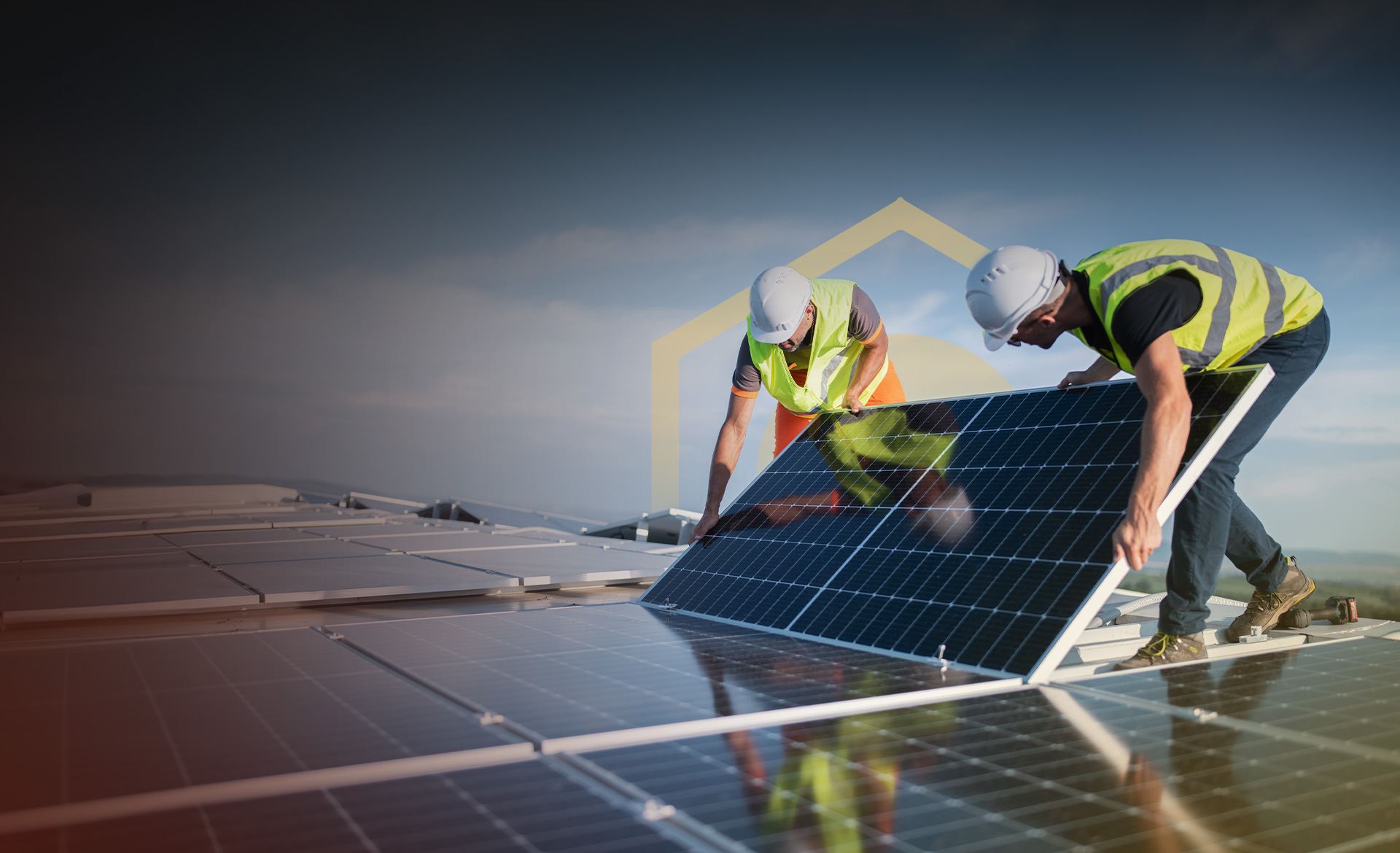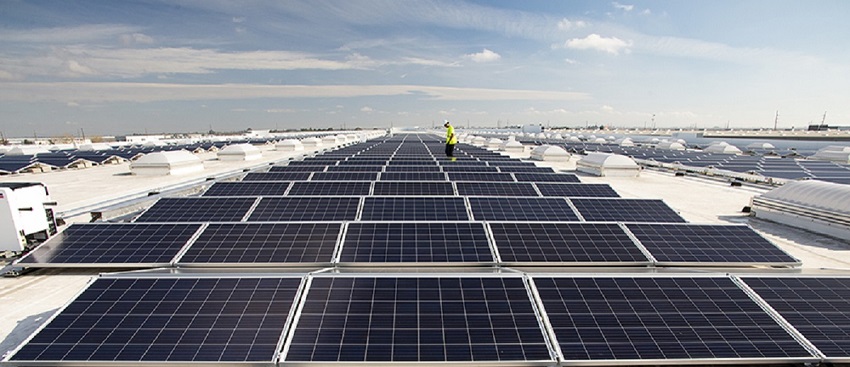Solar Panel Company Fundamentals Explained
Solar Panel Company Fundamentals Explained
Blog Article
Virginia Solar Panel Rebates: Lumina Solar Concentrates On Supplying Advanced Photovoltaic Solutions For Residences And Companies
History and Establishing
Have you ever wondered how a photovoltaic panel business springs from a mere trigger of motivation into a powerhouse of renewable resource? It often begins with a vision-- one fueled by a mix of innovation, determination, and a pinch of serendipity. The journey of many solar companies mirrors the development of the innovation itself: from large, ineffective panels to smooth, high-efficiency marvels utilizing the sun's bounty.
The Early Days
In the late 20th century, when solar power was still a specific niche concept, pioneers planted seeds for what would become a worldwide motion. Envision a little workshop filled with curious engineers, relentlessly explore solar batteries. Their passion was palpable, frequently driven by a desire to fight climate modification and lower reliance on nonrenewable fuel sources.
One such anecdote is about a founder who, inspired by an outdoor camping journey, realized that even in remote areas, the sun could power important gadgets. This easy observation sparked a business's objective to democratize access to tidy energy.
Establishing Principles

- Development: Continuously pressing the boundaries of solar innovation to improve performance and sturdiness.
- Sustainability: Devoting to environment-friendly manufacturing and minimizing carbon footprints.
- Ease of access: Making sustainable energy options inexpensive and useful for everyday users.
Milestones in Growth
| Year | Secret Occasion |
|---|---|
| 1985 | Business established in a small garage, focusing on research study and advancement. |
| 1995 | First business photovoltaic panel product launched, getting regional attention. |
| 2005 | Broadened to global markets, welcoming international sustainable energy objectives. |
| 2015 | Introduced advanced photovoltaic panel technology with improved energy conversion. |
Isn't it fascinating how these incremental steps, frequently ignored, form the energy landscape today? The solar panel business story is not almost innovation; it's about a ruthless mission for a brighter, cleaner future.

Innovations in Solar Panel Technologies
Ever discovered how some photovoltaic panels shine brighter and last longer? It's not magic; it's the science of photovoltaic effectiveness. Modern solar panel business invest heavily in technologies like bifacial cells, which record sunshine from both sides, increasing energy harvest without expanding roofing system space. Have you ever wondered why some panels perform much better on cloudy days? That's due to advances in thin-film solar innovation, which flourishes under diffused light conditions.
Item Variations Customized to Special Requirements
One size never fits all. Solar panel suppliers now use:
- Monocrystalline panels for maximum efficiency and smooth aesthetic appeals, perfect for space-constrained rooftops.
- Polycrystalline panels, which provide an economical option without compromising excessive output.
- Building-integrated photovoltaics (BIPV), merging solar tech flawlessly into architectural aspects like windows and exteriors.
Selecting the right product isn't practically in advance cost; it has to do with matching your environment, energy goals, and long-term savings. For instance, homes shaded by trees need panels that excel in low-light scenarios, something lots of overlook up until energy expenses climb suddenly.
Technical Tips for Ideal Selection
- Examine the temperature level coefficient-- lower values imply panels lose less performance on hot days.
- Search for panels with boosted anti-reflective finishings to take full advantage of light absorption.
- Think about the panel's service warranty not just for defects, but for ensured power output over years.
- Do not undervalue the importance of the inverter innovation paired with the panels; it can make or break your system's efficiency.
Beyond Panels: Emerging Trends
Picture solar panels that change their angle automatically to go after the sun-- tracking systems are becoming more accessible, increasing yield substantially. more info Or solar tiles that blend undetectably into your roofline, changing your home into a quiet, self-dependent power generator. These developments are reshaping what a solar panel company provides-- not just items, however integrated energy options.
Market Presence and Global Operations
Ever question why some photovoltaic panel companies seem to grow up in every corner of the globe while others hardly make a ripple? The distinction lies not simply in innovation but in mastering the art of browsing diverse markets. Broadening internationally is like planting seeds in different climates-- you should comprehend each environment's distinct conditions to grow.
Take, for circumstances, the elaborate dance of logistics and supply chain management. Delivering panels halfway across the world isn't practically distance; it has to do with timing, customizeds, tariffs, and adapting to regional need changes. A business with robust international operations anticipates these variables, making sure panels show up on schedule without pumping up costs. This insight is no little task and frequently separates market leaders from followers.
Secret Methods for Expanding Market Existence
- Localized production: Developing production centers near target markets minimizes shipping hold-ups and import intricacies.
- Strategic partnerships: Collaborating with local firms accelerates market penetration and builds trust.
- Adaptive product design: Customizing photovoltaic panel tech to weather, sun intensity, and facilities subtleties boosts performance and approval.
What about the human aspect? Photovoltaic panel business operating globally must reconcile cultural distinctions and regulatory subtleties without losing sight of their core objective. For instance, what works in a sun-drenched desert might fail in a damp seaside region. In some cases, the most innovative option is simply listening-- taking in local insights to improve innovation and technique.
Professionals frequently recommend a phased rollout instead of a shotgun growth. Why run the risk of overextension when measured growth builds sustainable momentum? Scaling carefully means balancing ambition with functional strength - Solar Panel Company. After all, in the race for sustainable energy dominance, perseverance can be as important as speed
Environmental Impact and Sustainability Practices
When solar panels first emerged, lots of presumed they carried absolutely no ecological luggage. The reality is more nuanced. The production of photovoltaic cells involves rare earth metals and energy-intensive processes, which can leave a sizable carbon footprint before the panels even reach rooftops. The true environmental expense depends heavily on the sustainability practices employed by the photovoltaic panel business throughout the lifecycle of their items.
How frequently do we pause to consider what takes place to photovoltaic panels at the end of their helpful life? Unlike batteries or electronic devices, solar panels can last 25-30 years, however disposal and recycling paths stay underdeveloped in lots of regions. A company committed to decreasing ecological harm will have a robust prepare for recycling photovoltaic products, salvaging important silicon, glass, and metals to avoid garbage dump accumulation.
Key Sustainability Methods
- Utilizing low-impact manufacturing strategies that minimize water and energy consumption.
- Implementing closed-loop systems to recycle production waste back into brand-new panels.
- Engaging in transparent supply chain audits to ensure ethical sourcing of basic materials.
- Designing panels for much easier disassembly to aid future recycling efforts.
It's worth noting that some solar business have pioneered innovative techniques, such as integrating eco-friendly parts or using less toxic chemicals during fabrication. This not only decreases environmental stress however likewise sets a precedent for the industry. The question remains: can the solar industry truly pivot towards a circular economy design without sacrificing performance or cost?
Professional Tips for Evaluating Sustainability
- Inquire about the business's commitment to carbon-neutral production and whether they offset emissions.
- Investigate if they partner with accredited recycling centers devoted to photovoltaic panel waste.
- Look for transparency reports detailing environmental effects and sustainability objectives.
- Think about the durability and service warranty of panels as an indirect procedure of resource effectiveness.
In the end, choosing for solar energy should suggest more than just slashing electrical power costs; it has to do with nurturing a future where energy is gathered properly and waste is attentively handled. Photovoltaic panel business that welcome this viewpoint not just brighten homes but also cast a brighter light on sustainable development.
Report this page